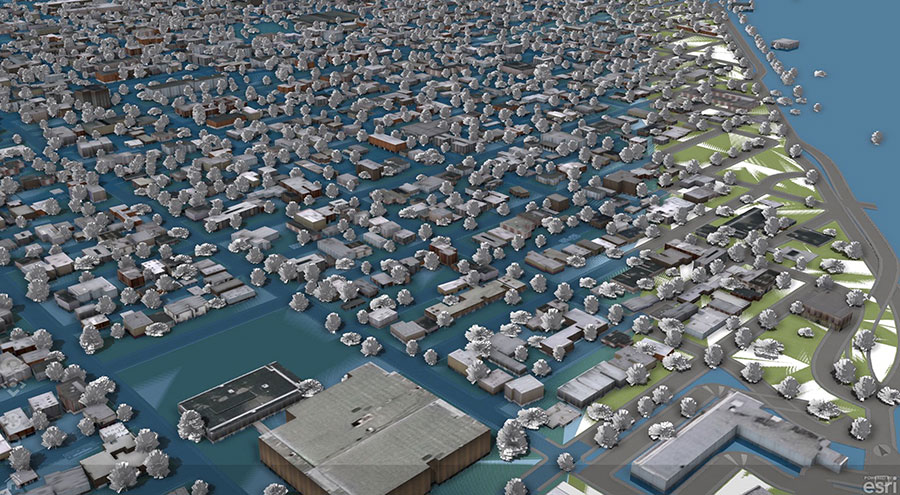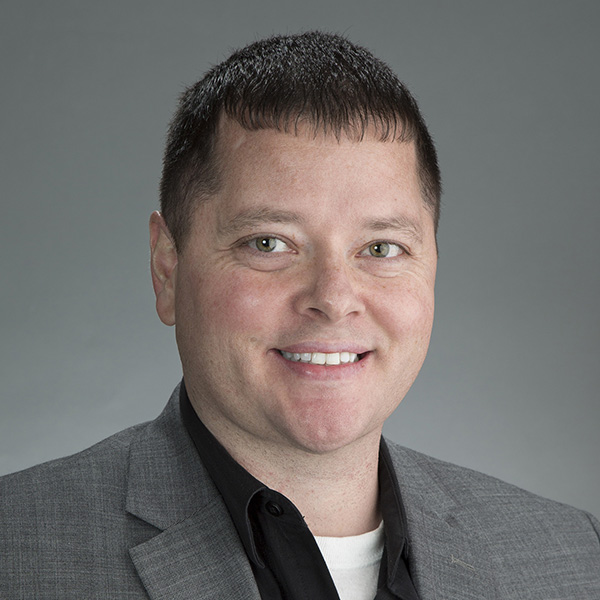
Newman is the principal investigator of the Community Engagement Core at the Texas A&M University SRP Center. (Courtesy of Texas A&M University School of Architecture)
Community resilience is a central research focus for Galen Newman, Ph.D.
As head of the Department of Landscape Architecture and Urban Planning and a member of the NIEHS-funded Superfund Research Program (SRP) Center at Texas A&M University, Newman focuses on improving urban resilience against natural disasters, such as hurricanes and flooding. His work shapes community resilience plans that use environmentally conscious landscape design to improve health outcomes.
“I build a lot of science into my design and planning approach,” Newman said. “We use large amounts of spatial analytics up front to create a master plan, and then we present those findings to the communities so they can give us feedback to ensure that we meet their needs.”
Building Partnerships
Researchers from the School of Public Health invited Newman to join the Texas A&M SRP Center shortly after he arrived at the university in 2011. They were using environmental sampling to analyze the effects of stormwater runoff and were interested in his skill set, which combines experience in community engagement with expertise in mapping and modeling urban areas.
“They said, ‘You bring a unique piece to us because no one else is doing master plans and flooding and contamination mitigation strategies,’” recalled Newman.
He now leads the center’s Community Engagement Core (CEC), which collaborates with local outreach organizations. Texas Target Communities is one example, with connections to more than 30 communities across the state. Organizations like this play an integral role in the engagement process, helping to establish trust and build lasting partnerships between researchers and the communities they serve, Newman explained.
“With the School of Public Health and the School of Architecture, we have a series of local organization leaders that we work with,” he said. “So, when we work through them, they reach out to the community stakeholders and residents, who immediately become our partners, because they trust those organization leaders.”
The CEC’s work focuses on fence-line communities which are located near industrial facilities. During flooding events, water can flow through these sites, carrying toxic chemicals into residential areas.

Newman’s first major project with the CEC began in 2015 in Manchester, Texas, a fence-line community located near the Houston Ship Channel. Working with local organizations such as t.e.j.a.s. and community stakeholders — particularly high school students — the team sampled air, water, and soil in Manchester and the ship channel area. Using that data, Galen and colleagues created images showing relationships between the presence of contaminants and health outcomes. For instance, higher concentrations of benzene in Manchester were associated with elevated rates of asthma, compared to national averages.
The researchers presented their findings at public meetings. Ultimately, their work informed a master plan to reduce environmental exposures in Manchester.
“Community decision makers and residents were deeply engaged in plan development from the start,” Newman said. “Our process involved a series of meetings that included ample opportunity for the public to interact with the design team and weigh in on design options.”
Among its recommendations, the plan called for residential and industrial areas to incorporate green infrastructure, or the use of plant and soil systems to absorb and redirect stormwater runoff. For example, rain gardens and vegetated channels called bioswales, among other features, will help the landscape to capture nearly 150,000 cubic feet of runoff a year and generate more than $300,000 in annual benefits for the city, according to the plan.
The successful collaboration among the CEC, local partners, and the community caught the attention of philanthropist Lauren Powell Jobs, who awarded Manchester $10 million to implement the plan. While most work was completed in 2021, the CEC team continues to conduct sampling and analysis.
“The work in Manchester got the ball rolling,” said Newman. “We wanted to continue our work there, while also expanding around the Houston Ship Channel, because we see so many communities experiencing the same circumstances.”
Newman and colleagues have also worked with residents of Sunnyside, another fence-line Houston community that is vulnerable to environmental contamination. New development on higher ground had exacerbated flooding around older homes in lower areas, Newman explained.
In partnership with the community organization Charity Productions, the CEC sought input from residents about environmental and infrastructural concerns. That feedback informed a master plan, developed by the CEC and Texas Target Communities, for renovating a 202-acre site in the southeast part of the Sunnyside neighborhood. The plan incorporates green infrastructure like green roofs — roofs layered with vegetation to capture rain — and is predicted to reduce runoff from major storm events by 37%.
Harnessing New Technology

Newman’s team also uses spatial data to power interactive websites like the Toxics Mobility Vulnerability Index (TMVI), which incorporates social and demographic factors to determine the risk of toxic chemical exposures during flood events. The tool can inform planning and public health interventions where they are most needed.
Looking ahead, Newman hopes to build on the success of the CEC by incorporating new technologies such as artificial intelligence and “digital twinning,” which is a digital replication of an area that allows researchers to study the effects of storm scenarios.
Newman and his team have applied this technology to Galveston Island, Texas, which experienced severe damage from Hurricane Ike in 2008.
“We built an entire digital twin of Galveston Island and ran some analytics on it, because they want to put what they call the ‘Ike Dike’ down the entire island,” Newman said. “We got some data to examine how the island will flood, storm surge-wise, with and without the Ike Dike, and we ran that over the digital twin.”
They found that the Ike Dike would reduce flooding by 36% and property damage by $4 billion, on average. The researchers recommended additional strategies to improve resilience against sea-level rise, including the use of permeable concrete to absorb stormwater runoff.
Newman shared his governing philosophy for solving urban challenges: “Don’t try to be so smart that you think you know everything about how to fix those communities. The answers lie in the people who interact with and live in those conditions every day of their lives. They will lead you to a solution if you just listen.”
Galen Newman, Ph.D. – Using Spatial Analytics


